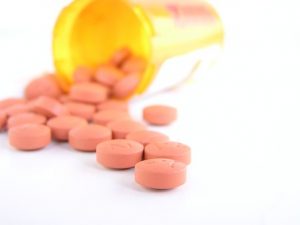
Medicare Part D experiences changes on a regular basis. In most years, premiums can shift, along with deductible caps, and overall coverage.
For 2018, it was estimated that the average monthly premium for Medicare Part D would decline. It’s estimated to fall from $34.70 to $33.50 each month. However, each subscriber may have varying experiences. This is due to cost differences by physical location.
Other noteworthy Medicare Part D changes for 2018 included a slight increase to the deductible caps. The coverage gap narrowed slightly.
Additional changes are expected in 2019 as well. Here’s what you need to know in relation to Medicare Part D coverage for 2019.
Opioid Restrictions

Medicare is putting certain restrictions in place as the opioid crisis continues to cause harm across the nation. The hope is that these restrictions can combat the issue. Beneficiaries at risk of developing addictions, particularly those with a history of addiction, may not have the same level of access to opioids as in previous years.
However, some patients, such as hospice and cancer patients, will not be subject to restrictions.
Cost Reductions
The Centers for Medicare & Medicaid Services (CMS) announced at the end of July that the average basic premium for Medicare Part D is expected to decline in 2019. This marks the second year in a row where a downward shift will occur.
While the exact savings may vary from one beneficiary to the next, the new average monthly premium is expected to be $32.50. The new premium represents a savings of about $1 per month.
While the details are not fully known, some Medicare Part D users will also see lower costs for specific generic drugs. Requirements regarding cost-sharing for some generic prescriptions may shift. This should lead them to be less expensive for the beneficiary.
Deductible Cap Increase
Medicare Part D’s standard initial deductible represents the out-of-pocket expense before the prescription drug plan begins to cover any costs.
The standard initial deductible for 2018 is $405, and will rise to $415 for 2019. Since 2015, this cost has steadily increased. The cost has risen from $320 in 2015 to $360 in 2016. The next increase came in 2017 at $400 and finally reached $405 in 2018.
Formulary Changes
In 2019, there will be more flexibility regarding the substitution of generic medications for brand-name drugs or similar formulary changes. This provides pharmacies with additional options, which may result in the reduction of out-of-pocket costs especially as many generics are less expensive than their brand-name counterpart.
Coverage Gap Narrows
For 2018, the initial coverage limit was $3,750. After reaching this amount, beneficiaries enter the “donut hole,” or a period where their prescription drug costs exceeded the limit.
After reaching the limit, beneficiaries must cover the total costs of their remaining prescription drug costs for the year. This additional cost can be burdensome, until the yearly out-of-pocket maximum is achieved. However, generic drugs do still have a 56 percent discount. This discount is available once the beneficiary enters the donut hole. Brand-name medications also receive a discount.
In 2019, the initial coverage limit will rise to $3,820. This means more prescription drug costs are being covered by Medicare Part D. Additionally, generic drugs will have a discount of 63 percent and brand-name medications will have a 75 percent discount, which represents an increase. This could make affording medications more manageable.
Plus, even though prescriptions drugs are purchased at a lower price while a beneficiary is in the donut hole, they will receive a credit for 95 percent of the medication’s value. That applies to the out-of-pocket maximum in 2019, which may allow the upward limit to be hit more quickly.
Total Out-of-Pocket Maximum Increases
The point where a beneficiary exits the donut hole is set to rise by $100 in 2019. This brings the maximum from $5,000 in 2018 to $5,100 in 2019.
Open enrollment for Medicare Part D begins on October 15, 2018, and runs through December 7, 2018. During that window, current beneficiaries can select a new prescription drug plan. They can look for one that better aligns with their needs and budget. Seniors must also take into account any changes put forth in the updated program.
Have you had any experience with Medicare Part D? If so, tell us about it below in the comments.
Tamila McDonald is a U.S. Army veteran with 20 years of service, including five years as a military financial advisor. After retiring from the Army, she spent eight years as an AFCPE-certified personal financial advisor for wounded warriors and their families. Now she writes about personal finance and benefits programs for numerous financial websites.
Comments